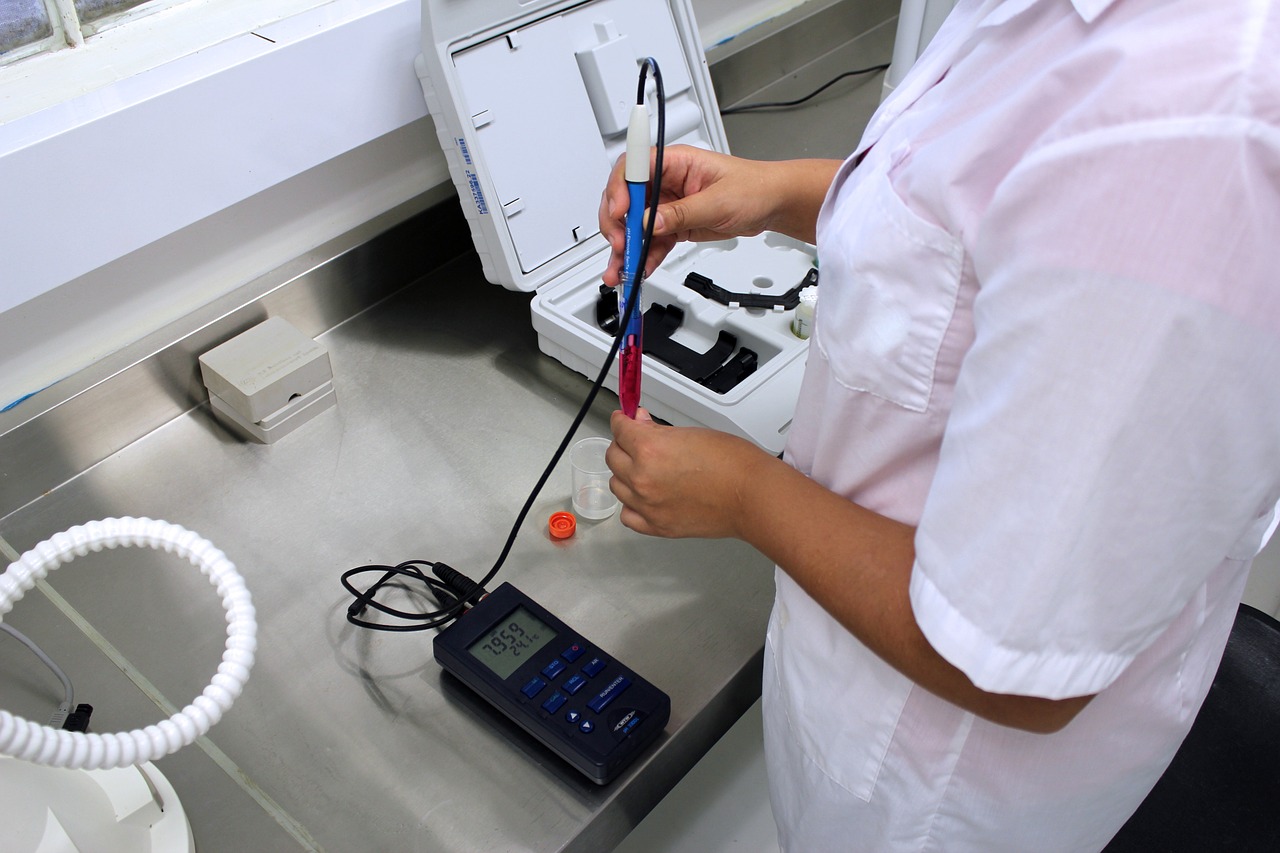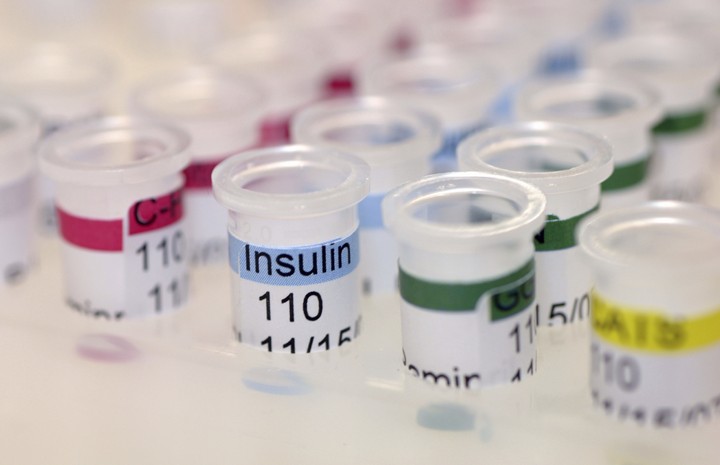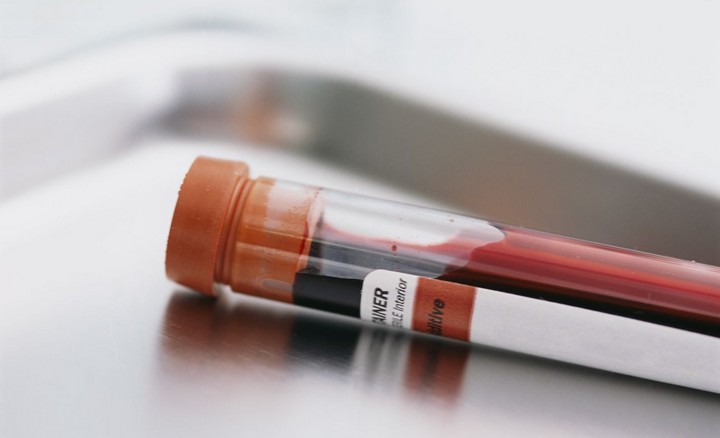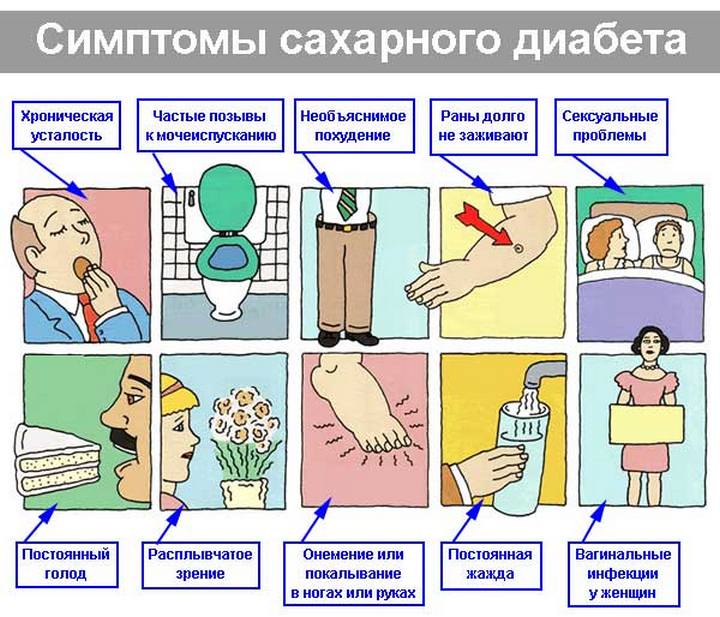Permissible blood sugar level. Blood sugar levels for men and women, preparation for testing. Insulin high and low
A blood test for sugar is a well-known expression, because everyone periodically takes it and worries that everything is in order. But this term is not entirely correct and goes back to the Middle Ages, when doctors thought that the feeling of thirst, the frequency of urination and other problems depended on the amount of sugar in the blood. But now everyone knows that it is not sugar that circulates in the blood, but glucose, the readings of which are measured, and in the people this is called a sugar test.
How is blood sugar determined in the laboratory?
As a person with diabetes, you may or may not know what your target ranges should be for your first blood sugars in the morning, before meals, after meals, or before bed. You may or may not understand what blood sugar ranges are for people without diabetes. You may or may not understand how you correlate with target ranges.
How do you get a clear picture of what's going on with your blood sugar and how it might affect your health? In this article, we'll look at the recommended blood sugar target ranges for people without diabetes.
What can be the level of sugar in the blood
Glucose in the blood is designated by the special term glycemia. This indicator is very important, because it allows you to determine many components of health. So, if blood glucose has low values, then it is observed, and if there is a lot of it, hyperglycemia. The correct amount of this monosaccharide in the blood is very important, because with its deficiency, the threat to life is no less than with excess.
We will be looking at target ranges for different days of the day for people with diabetes. We'll look at target ranges for type 1 diabetes and type 2 diabetes. We'll see how you can document your or in "," and manage your blood sugars to get them in your target ranges. In the United States, blood sugar is measured in milligrams per deciliter.
In Europe and Canada, blood sugar is measured slightly differently, in terms of millimoles per liter, which is abbreviated "mmol". However it is measured, blood sugar is the concentration of sugar or glucose in the bloodstream. If you multiply the Canadian or European "mmol" by the number 18, you can calculate milligrams per deciliter.
In the case of hypoglycemia, the following symptoms are observed:
- severe hunger;
- a sharp loss of strength;
- fainting, lack of consciousness;
- tachycardia;
- excessive sweating;
- irritability;
- tremor of the limbs.
Fixing the problem is quite simple - you need to give the patient something sweet or inject glucose. But you need to act quickly, because in this state the score goes by minutes.
Blood sugar levels for people without diabetes
In other words, if a person in Canada reports a blood sugar level of 8, multiply 8 times 18 to give you the number 144. In a non-diabetic person, the body makes enough insulin to bring down blood sugar after eating. There is enough insulin made by islet cells in the pancreas to fight blood sugar. Insulin, which is produced by islet cells in the pancreas, works well. It is effectively used by the cells of the body.
Fasting blood sugar and up to a target blood sugar level for a person without diabetes
This value is in the normal range for this laboratory value. This is the range for taking blood sugar and before meals. If we convert the same number to mmol, the value is to mmol. Again, this is the measurement used in the United States.
Two-hour post-random blood sugar for a person without diabetes
New recommendations from the American Diabetes Association are outlined.Hyperglycemia is more often a temporary condition than a permanent one. So, it is observed after eating, with a strong load, stress, emotions, sports and hard work. But if there is an increase in sugar during several tests from a vein on an empty stomach, there is reason to worry.
With the following symptoms, it is worth doing a blood test, as they indicate hyperglycemia:
Indications in a healthy diabetic person
Post-meal or post-meal blood sugar measures how quickly your pancreas responds to the release of insulin into your bloodstream after a meal. In a non-diabetic person, the pancreas can quickly respond to changes in blood sugars by releasing the appropriate amount of insulin to combat the post-meal blood sugar spike. There is no insulin resistance in a person without diabetes, so the cells of the body pick up insulin and use it for energy. Everything is as it should be and works fine.
- frequent urination;
- thirst;
- weight loss, dry mouth;
- vision problems;
- drowsiness, constant fatigue;
- the smell of acetone from the mouth;
- tingling in the legs and other symptoms.
Sugar analysis should be done often and seek help from doctors, as it can be not only temporary problems or diabetes. Glucose rises or falls in many serious pathologies, so a timely trip to endocrinologists will help start treatment as early as possible.
Blood sugar levels for non-pregnant adults with diabetes
Blood sugar levels for non-pregnant adults with diabetes are consistent with A1C less than 7
These values show which studies have shown optimal blood sugar levels for non-pregnant adults to avoid the complications of diabetes in the long term.Fasting blood sugar and up blood sugar levels for adults with diabetes
Two-hour postprandial blood sugar levels for adults with diabetes
The most important goal is to always avoid low blood sugar or hypoglycemic episodes. Adjustment of target blood sugar ranges. There are several times when it is appropriate to adjust the target blood sugar ranges for a person with diabetes. Goals can be adjusted depending on the age of the person.How to find out the sugar rate for yourself
There is no universal norm for everyone. Yes, the gold standard is 3.3-5.5 mmol / l, but after 50 years this figure becomes higher in the absence of pathologies, and after 60 years it is even higher. Therefore, it is necessary to distinguish between norms at least by age. But there is practically no gender difference. That is why the norm of blood sugar in women and men is the same, but there are exceptions.
For example, a 92-year-old man with diabetes would not treat the long-term complications of diabetes in the same way as a younger one. Therefore, the target range should be adjusted according to the age of the patient. As the patient improves self-control, target ranges can be narrowed down to normal ranges.
Blood sugar levels for children and adolescents under 18 years of age with type 1 diabetes
Blood sugar levels for children and adolescents under 18 years of age match an A1C of less than 5% without episodes of low blood sugar or hypoglycemia. contributes to complications, both in the short and long term for young people and adolescents.
It is worth highlighting several factors on which the glucose indicator may depend:
- patient's age;
- the influence of certain physiological processes in women;
- depending on food intake;
- depending on the place of blood sampling (vein, finger).
So, in adult men and women on an empty stomach, glucose should be 3.3-5.5 mmol / l, and if blood from a vein is used, the figure rises to 6.2 mmol / l. Also, the rate of sugar in the blood after eating rises and is up to 7.8. But after 2 hours, the values \u200b\u200bshould return to natural. If on an empty stomach, a blood test shows a glucose level of more than 7.0, we are talking about prediabetes.
However, low blood sugar or hypoglycemia can damage brain function and affect memory. This is one difference between young and teenagers. Otherwise, there is no difference. With that said, the target varies with blood sugar levels, pre-meal and post-meal are the same for children and teens under the age of.
Blood sugar targets for gestational diabetes
The most stringent and tight control of blood sugar is needed when the patient has gestational diabetes. This tight control is necessary to protect mother and baby when the mother develops gestational diabetes. In addition to increased maternal complications, an infant born to a mother with gestational diabetes is at an increased risk of being born with a high birth weight. This condition is called macrosomia. Later in life, the infant may be more prone to obesity and type 2 diabetes.
And this is already a pathology in which insulin is still being produced, but there is already a problem with the absorption of monosaccharides. As you know, when the problem is not the inability of the body to produce insulin, but a violation of glucose metabolism.
If the result obtained raises suspicions of prediabetes, it is necessary to repeat the analysis on an empty stomach again, then take water solution glucose and take measurements in an hour and again in an hour. If the body is healthy, it will quickly bring the amount of glucose back to normal. Therefore, after an hour, the result may be even higher, but if after two hours the results are still in the range of 7.0-11.0, a diagnosis is made. Then it is necessary to start the examination and identify other signs of diabetes that may be hidden.
When the mother's extra blood sugar crosses the placenta, the baby's pancreas is signaled to make more insulin. Therefore, the baby grows too much in the womb. After birth, an infant is at an increased risk of hypoglycemia, or low blood sugar, associated with the excessive amount of insulin that their pancreas produces.
diabetes goals for gestational diabetes from the American Diabetes Association. Blood sugar targets for gestational diabetes are consistent with an A1C of less than 6%. As long as this cannot be achieved without episodes of low blood sugar or hypoglycemia, this is tight control.
The norm of sugar and age
Norms of 3.3-5.5 mmol / l are average and are specifically suitable for people aged 14-60. In children, the rates are somewhat lower, and in the elderly - higher. For different ages, the norm is as follows:
- in newborns - 2.8-4.4;
- in children under 14 years old - 3.3-5.6;
- in persons 14-60 years old - 3.3-5.5;
- in the elderly (60-90 years old) - 4.6-6.4;
- in the very elderly (over 90 years) - 4.2-6.7 mmol / l.
Whatever the type of disease, even on an empty stomach, blood glucose will be more than normal. And now the patient has a need to prescribe nutrition, take medicines, observe physical activity and doctor's prescriptions. There are special tables according to which doctors can, even after a blood test on an empty stomach, with a high degree of probability establish diabetes. So, it is present in adult women and men with the following values:
For women with pre-existing diabetes who become pregnant, the target blood sugar levels are as follows. Also, during pregnancy, red blood cells spend their lives faster. A1C may also need to be administered monthly during pregnancy due to red blood cell changes that occur during pregnancy. The American College of Obstetricians and Gynecologists recommends different target ranges than the American Diabetes Association. Until a consensus is reached between the two subjects, goals should be set based on the individualization of patient care and clinical experience.
- if the blood is from a finger, then the indicators should be above 6.1 mmol / l;
- for blood from a vein - over 7 mmol / l.
Sugar levels for women
Although in both sexes the amount of glucose in the blood should be within the general limits, there are a number of situations in women when this indicator can exceed the norm, and at the same time, you should not worry about the presence of pathologies.
Tips for Tracking Your Blood Sugar Samples and Using Your Results
Have a blood sugar chart on your phone or a notebook nearby so you can compare your numbers. Inside there are copies of the improved Blood Sugar Journal. Phone apps are popular nowadays and if you like and use smartphones why not download a handy app for your mobile phone? There are apps that track your blood sugar, diet intake, physical exercises and much more.
Indications in healthy people
There are many more applications available. To find them, go to your play store on your phone and search for "diabetes apps", we have listed the best diabetes apps as well. This search should raise quite good list applications for you to choose from. Most applications can be downloaded for free. My suggestion would be for you to try a few and then determine which one is best for your purposes.

A slight excess of sugar is typical for pregnant women. If the values do not exceed 6.3 mmol / l, this is the norm for such a condition. With an increase in indicators to 7.0, you need to be additionally examined and adjust your lifestyle. In the case of an increase in this limit, a diagnosis is established and treated. But there is no need to worry, because after childbirth the disease will go away.
A Few More Things Related to Blood Sugars
Fish and chicken are eaten regularly, but not red meat, butter, or sweets. The phytonutrients and fiber in plant foods help control blood sugar, and olive oil can reduce inflammation. Eating more anthocyanins, the nutrients that give grapes and berries their bright red and blue colors, was associated with improved blood sugar control in a new British study. A single serving a day of grapes or berries can have the same effect on blood sugar as a single-point reduction in body mass index, says researcher Edin Cassidy of the Norwich School of Medicine.
Menstruation can also seriously affect the results of the analysis. Doctors advise to refrain from going for diagnostics when critical days are coming, if there is no urgency in the analysis. The ideal time to donate blood for glucose is the middle of the cycle.
Another reason for incorrect blood sugar readings is. At this time, hormonally, the body changes some processes that relate to glucose metabolism. Therefore, during this period, doctors recommend not losing sight of sugar control and every 6 months to come to the laboratory for testing.
Symptoms of hypoglycemia include:
If you often skip your morning meal, you are more likely to develop type 2 diabetes. Eating breakfast can help stabilize your blood sugar throughout the day. Prepare a healthy protein blend, complex carbohydrates and full-fat yogurt mixed with fruits and nuts, for example. Starting the day with a lot of simple carbohydrates is just as bad for your blood sugar as skipping meals, according to experiments at the University of Minnesota.
The norm of sugar after eating in children
Women who did cardio and strength training every week had the lowest risk of diabetes—about a third less than non-exercises. After a workout, your muscles consume more glucose from the bloodstream. As you become more fit over time, the cells become more sensitive to insulin.
Diabetes mellitus: glucose readings
It was already mentioned in the article that in the case of an analysis on an empty stomach, values \u200b\u200bhigher than 7.0 are suspected to have diabetes mellitus. But in order to make an accurate diagnosis, it is necessary to confirm suspicions with additional procedures.
One method is to perform a carbon load glucose test. It is also called a tolerance test. If, after the introduction of a monosaccharide, the level of the glycemic index rises in the region of 11.1 mmol / l, they say that there is a diagnosis.
Walk away from the table
Take a walk for two minutes after every 20 you spend sitting. A new study out of England indicates that regular walking breaks reduce blood sugar spikes after you eat. A higher score may encourage earlier or more frequent blood sugar checks.
drugs for general conditions, such as steroids to control asthma, statins to improve cholesterol, and diuretics to lower blood pressure can raise blood sugar levels. Ask your doctor if other medicines can treat your condition without these side effects.
Sometimes this test is not enough, so they begin to conduct additional examinations. One of those is . Its purpose is to find out how many erythrocytes have changed pathologically under the influence of an excess concentration of plasma glucose. Thanks to the examination of erythrocyte pathologies, one can also find out the growth rate of the disease, the time of its occurrence and the stage at which the body is currently located. This is valuable information that will help you choose the right pathology treatment.

Normal indicators of such hemoglobin should be no more than 6%. If the patient has diabetes compensated type, they grow to 6.5-7%. At rates of more than 8%, if previously treated, we can say that it is absolutely ineffective (or the patient does not comply with the required conditions), so it must be changed. As for glucose in compensated diabetes, it should be 5.0-7.2 mmol / l. But during the year, the level can change both downwards (summer) and upwards (winter), depending on the susceptibility of cells to insulin.
Since there are many tests for sugar, you need to prepare for them in a completely different way. For example, if you need to donate blood on an empty stomach from a finger and a vein (classic analysis), you can’t eat for 8 hours before the manipulation. It is also impossible to take liquid at this time, as the blood volume will increase, the glucose concentration will dilute, so the results will be unreliable.
When the patient eats, insulin is released to normalize the amount of monosaccharides in the blood as quickly as possible. After an hour, it is about 10 mmol / l, after 2 hours - less than 8.0. It is also very important to choose the right diet before analysis. If you eat high-carbohydrate and fatty foods, then even 10-12 hours after ingestion, the glucose level will be excessive. Then between the meal and the analysis make a break of 14 hours.
But not only these factors (the time between eating and analysis, as well as the nature of the food) can affect the result of classical analysis. There are other indicators - the level of physical activity of the body, stress, the emotional component, some infectious processes.
The results change slightly, even if you take a walk before going to the clinic, and training in the gym, playing sports and other loads greatly distort the test, so they abstain from this all the day before the analysis. Otherwise, the results will show the norm, but this will be a lie, and the patient will not be able to know that he has a pre-diabetic condition. At night before the tests, you need to have a good rest, sleep and feel calm - then the chance for accurate results will be high.

There is no need to wait for a scheduled appointment, but it is better to go for tests ahead of schedule if there are disturbing symptoms. So, multiple itching of the skin, abnormal thirst, frequent desire to go to the toilet, sudden weight loss for which there are no prerequisites, multiple skin rashes in the form of boils, multiple folliculitis, abscess, fungal infections (thrush, stomatitis) - all this may indicate a developing secretly diabetes mellitus. The body is weakening every day, so these symptoms appear more and more often.
Glucose in the blood serum appears after eating foods containing carbohydrates. For its assimilation by tissues in the body, the protein hormone insulin is produced. When the insular apparatus malfunctions, the concentration of glucose in the blood increases. Pathology has several stages of varying complexity; to identify pathology, patients are prescribed laboratory research blood to determine the level of glycemia.
Before taking tests, patients should refrain from eating for 10 hours, the day before this, alcohol and coffee should not be consumed. Blood is taken in the morning on an empty stomach.
Such a study allows you to determine the state of metabolic processes in the body, the degree of deviation from the norm of glycemia, diagnose a pre-diabetic state and type 1 or type 2 diabetes mellitus.
How much sugar is in the blood serum of healthy people? The fasting glycemic index is normally in the range of 3.3-5.5 mmol / l. With an increase in these values, a re-analysis and several more studies are prescribed to establish the correct diagnosis.
If the fasting result ranges from 5.5 to 6.9 mmol/l, prediabetes is diagnosed. When glycemia reaches a value exceeding 7 mmol / l, this indicates the presence of diabetes mellitus.
How long does it last high sugar in blood serum after eating sweets? The increase in glycemia after light carbohydrates persists for 10–14 hours. Therefore, it is this period of time that should be refrained from eating before taking the test.
Fasting serum sugar is increased to 5.6 - 7.8, this is a lot, what does this mean and what should be done? Hyperglycemia can be caused by:
- diabetes;
- stressful state of the patient;
- physical stress;
- taking hormonal, contraceptive, diuretic drugs, corticosteroids;
- inflammatory, oncological diseases pancreas;
- condition after surgery;
- chronic liver diseases;
- pathology of the endocrine system;
- improper preparation of the patient before taking the test.
Stress and excessive physical activity stimulate the secretion of the adrenal glands, which begin to produce contrainsular hormones that promote the release of glucose by the liver.
If the patient takes medications you need to tell your doctor about this. To establish the diagnosis, the study is carried out twice. To exclude or confirm an endocrine disease in a patient, a study is also done on glycated hemoglobin.
Glucose sensitivity test

If fasting blood serum sugar increased to 6.0 - 7.6, what should be done, how much and how dangerous it is, how to treat the pathology? Patients are scheduled for a glucose tolerance test with sugar load if the results of previous analyzes are questionable. This study allows you to determine how much glycemia rises after the intake of carbohydrates in the digestive tract and how quickly the level normalizes.
First, blood is taken from the patient on an empty stomach, after which they are given a solution of glucose with water to drink. The material sampling is repeated after 30, 60, 90 and 120 minutes.
2 hours after drinking a sweet solution, the level of glycemia should be below 7.8 mmol / l. An increase in the level to 7.8 - 11.1 mmol / l is diagnosed as a violation of glucose tolerance, metabolic syndrome or prediabetes. This is a borderline condition that precedes type 2 diabetes.
Pathology is treatable. Patients are prescribed a strict low-carbohydrate diet, exercise, reduced excess weight. Most often, such measures are enough to restore metabolic processes in the body and delay or completely prevent the development of diabetes for a long time. In some cases, drug therapy is carried out.
With results exceeding 11.1 mmol / l, a diagnosis is made - diabetes mellitus.
Analysis for the level of glycated hemoglobin

Diabetes mellitus can have a latent course, and at the time of testing it does not manifest itself as an increase in glycemia. To determine how much sugar has increased in the body over the past 3 months, an analysis is carried out for the concentration of glycated hemoglobin. The answer of the study allows you to determine the percentage of hemoglobin that has reacted with glucose.
Special preparation before passing the analysis is not required, it is allowed to eat, drink, play sports, lead a normal lifestyle. Do not affect the result and stressful situations or any diseases.
How much glycated hemoglobin is in the blood serum healthy person? Normally, this substance is contained in the range of 4.5 - 5.9%. An increase in this level indicates that there is a high percentage of the likelihood of developing diabetes. A disease is detected if the content of glycerinated hemoglobin is more than 6.5%, which means that the blood contains a lot of hemoglobin associated with glucose.
Which doctor to contact

What does the analysis say if the blood sugar level is increased to 6.4 - 7.5 mmol / l on an empty stomach, is it a lot, what does it mean and what should be done? These are high glycemic levels, which require additional research. After the appearance of suspicions of diabetes mellitus, you should seek help from an endocrinologist.
If the doctor diagnosed prediabetes based on the results of the tests, you should follow a low-carbohydrate diet, exclude sweets and foods containing easily digestible sugars from the diet.
The menu should be fresh vegetables, fruits, healthy foods nutrition. Physical activity improves the absorption of insulin by the tissues of the body, this helps to reduce the level of glycemia and restore metabolic processes.
If diet therapy exercise stress do not give results, additionally prescribe the intake of sugar-lowering drugs. Treatment should take place under the strict supervision of a physician.
If fasting blood sugar has risen to 6.3 - 7.8, this is a lot to do, does this mean that diabetes has developed? If a glucose tolerance test and a glycated hemoglobin test confirm high glycemic levels, diabetes is diagnosed. Patients should be seen by an endocrinologist drug treatment follow the prescribed diet.

- increased urge to urinate;
- polyuria - an increase in the volume of urine;
- constant feeling of thirst, drying of the mucous membranes of the oral cavity;
- severe hunger, overeating, as a result of a rapid increase in body weight;
- general weakness, malaise;
- furunculosis;
- long-term regeneration of abrasions, wounds, cuts;
- dizziness, migraine;
- nausea, vomiting.
Many patients have symptoms of initial stages appear blurry or not at all. Later there are some complaints, worse after eating. In some cases, there may be a decrease in the sensitivity of some parts of the body, most often it is lower limbs. Wounds do not heal for a long time, inflammation, suppuration is formed. This is dangerous, gangrene can develop.
An increase in blood sugar levels on an empty stomach is a signal of a violation of metabolic processes in the body. Additional studies are being carried out to confirm the results.
Timely detection of the disease, strict control over nutrition and therapy will normalize the patient's condition, stabilize glycemia, and prevent the development of severe diabetic complications. Violation of metabolic processes causes a malfunction of the digestive, nervous, of cardio-vascular system and can cause a heart attack, atherosclerosis, stroke, neuropathy, angiopathy, coronary disease hearts. When too high level glycemia, the patient plunges into a coma, which can lead to severe disability or death.



















